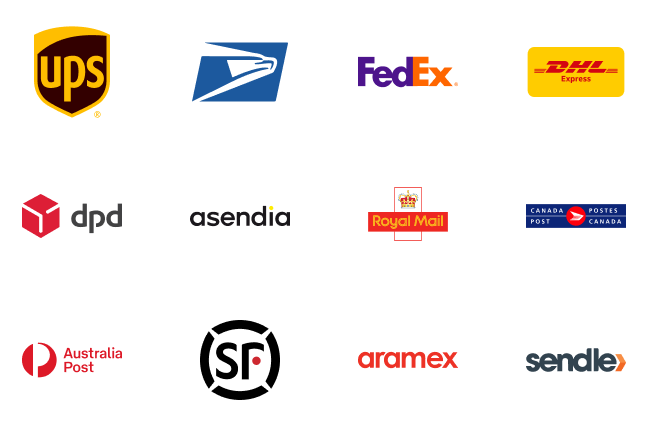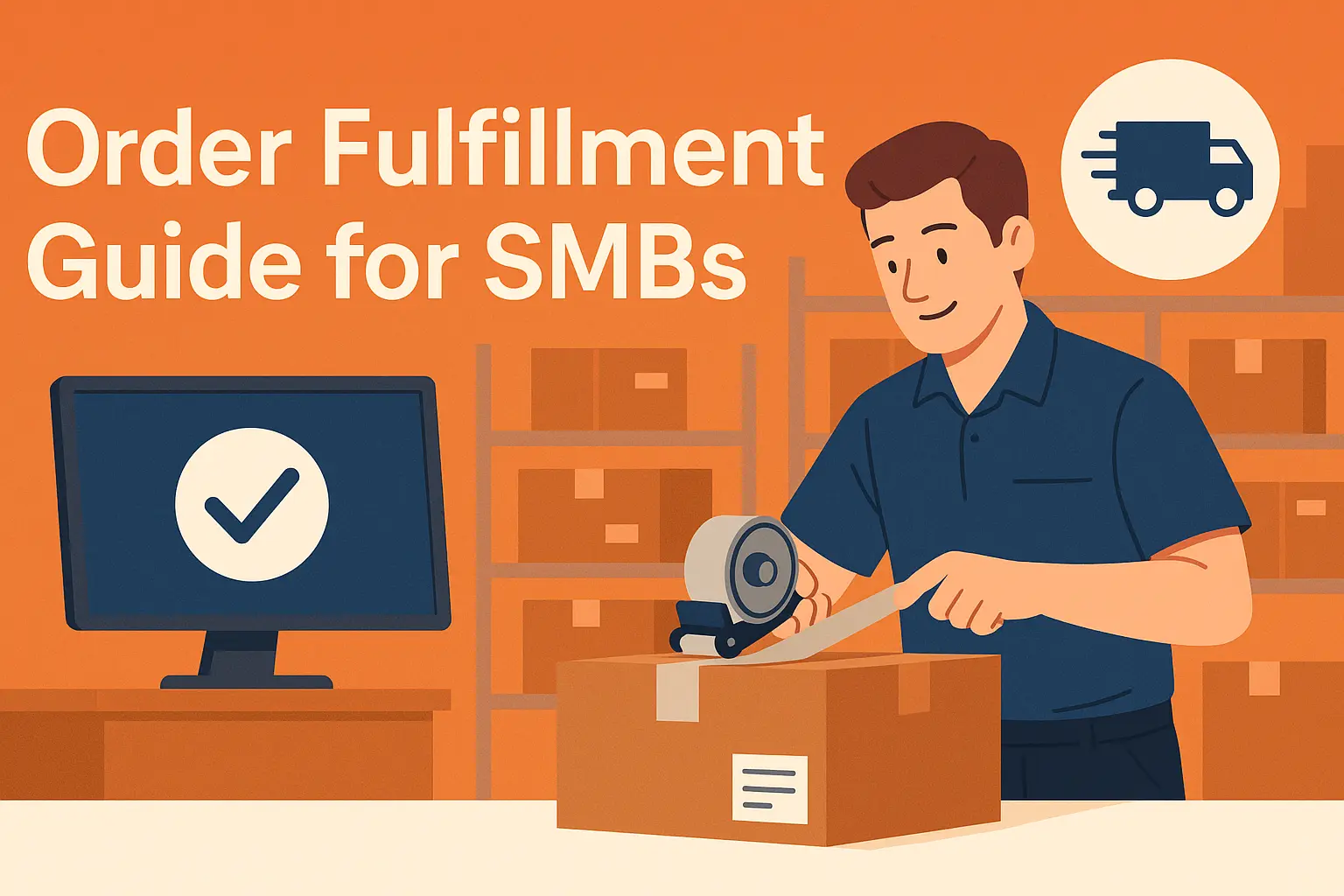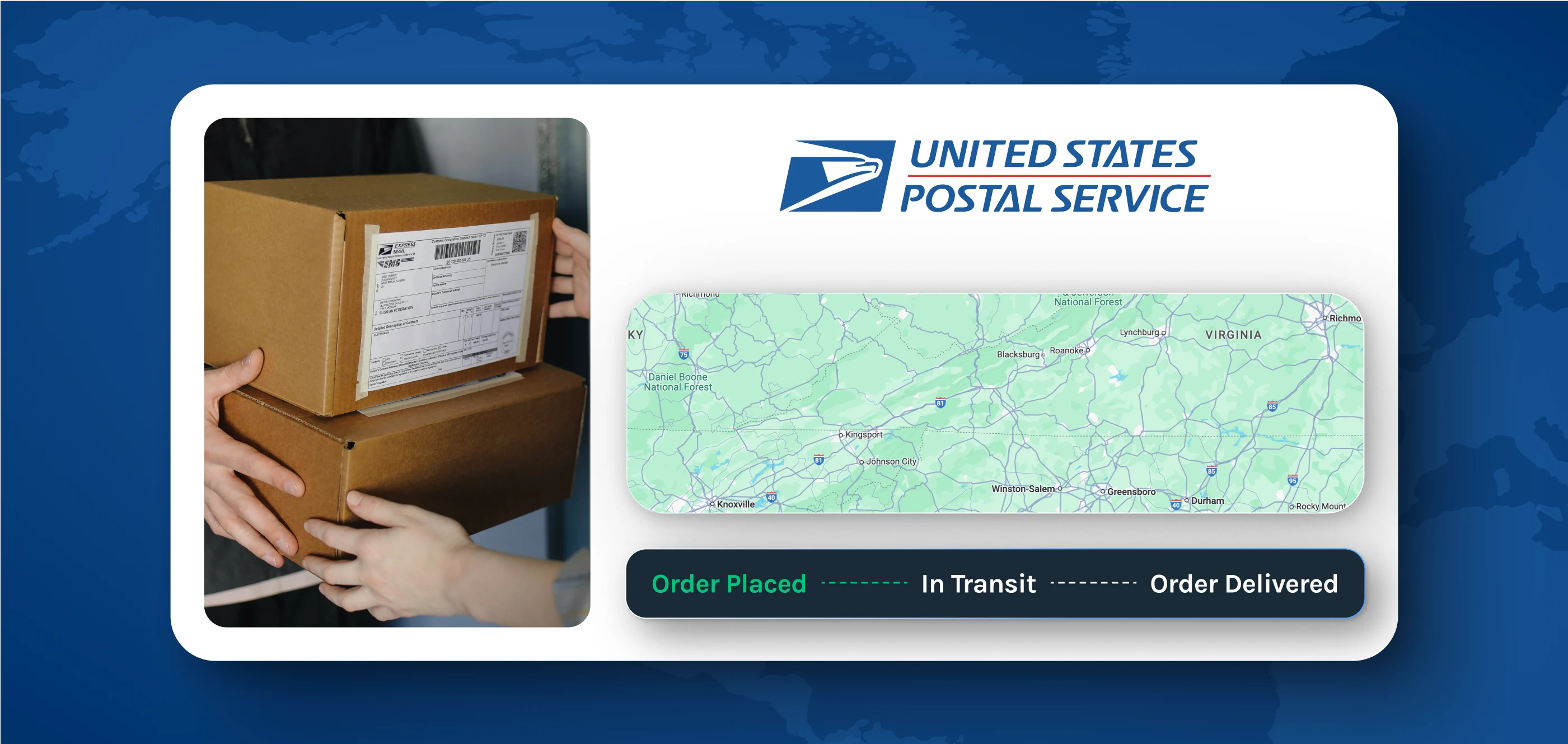In 2025, new Trump tariffs ecommerce policies are reshaping how online stores buy and ship products.
These tariffs target imported goods from countries like China, Mexico, Canada, and India, making it harder for eCommerce brands to maintain low costs and healthy profit margins. Understanding these changes is critical for small businesses that rely heavily on foreign suppliers or sell imported goods directly to U.S. consumers.
What Are the 2025 Trump Tariffs — and Why Do They Matter?
Tariffs are taxes imposed on goods when they enter the US. President Trump decided to impose tariffs on a wide range of imports to encourage domestic production, protect domestic industries, and influence trade negotiations. In 2025, these new tariffs affect electronics, apparel, home goods, auto parts, and raw materials.
The tariffs are part of the Trump administration's reciprocal tariffs policy, designed to pressure countries like China, Mexico, India, and Canada to lower trade barriers and align with U.S. standards. While the policy aims to spur investment in American manufacturing and re-shoring American jobs, the immediate effect for online merchants is higher tariff costs, more complicated supply chains, and increased prices for goods imported from affected countries.
Additionally, the expiration of the $800 de minimis threshold now subjects small parcels that previously entered duty-free to tariffs. This change hits small brands, marketplaces, and DTC sellers disproportionately, adding additional costs that can erode margins quickly.
Why You Should Care
Even a modest increase in tariffs—5–10%—can make imported goods unprofitable when applied across multiple shipments per month. Online sellers that rely heavily on cross-border suppliers must rethink sourcing, pricing, and shipping strategies to remain competitive.
Fast Facts
- McKinsey reports that the U.S. weighted-average tariff rate jumped from ~2% to over 20% since April 2025.
- Supplier prices are rising by as much as 30%, forcing small businesses to raise prices quickly (Financial Times, Aug 2025).
- Nearly 40% of goods sold by small eCommerce stores come from China, Mexico, and India (USITC).
Which Countries and Products Are Most Affected?
This section breaks down Trump's tariffs by origin and product category, showing where costs rise the most.
China
Tariffs on China are among the steepest, with a baseline of 30%. Electronics, textiles, and high-volume consumer goods face additional duties, sometimes pushing rates even higher. Many sellers are relocating production or exploring alternative suppliers to mitigate these costs.
Hong Kong
Like China, Hong Kong faces a 30% baseline tariff. Consumer electronics and apparel imports are particularly affected, creating new challenges for sellers that rely on Hong Kong as a sourcing hub.
Mexico
The Mexico tariffs affect popular imports such as auto parts, beauty products, and small appliances, which now face duties of up to 35%. These increases are pressuring small businesses to adjust margins, absorb costs, or raise prices.
Canada
Certain Canadian imports, including home goods and specialty appliances, are also subject to new tariffs. While not as widespread as China or Mexico, the increases still impact sellers that depend on Canadian suppliers.
European Union
Imports from the EU, including luxury goods, wine, and specialty foods, are now facing new tariffs. These duties can significantly raise costs for retailers catering to premium or niche consumer segments.
Vietnam
Vietnam, a fast-growing sourcing hub for apparel, footwear, and consumer goods, is also affected by tariffs. Vietnam tariffs range from a 20% baseline to a 40% on transshipped goods, which affects the many SMBs that shifted production from China to Vietnam. These businesses now face rising costs again, complicating diversification strategies.
United Kingdom
Post-Brexit, the UK faces its own set of tariffs. Items such as fashion goods, homeware, and specialty consumer products are seeing higher duties, which may erode margins for sellers importing from British suppliers.
Key Categories
Across all origins, electronics, home goods, apparel, and automotive accessories see the sharpest cost increases. Products that were once competitively priced may now push consumers past acceptable thresholds, raising the risk of cart abandonment.
2025 Tariff Table: Example Costs by Category
Here's a quick table to understand how these changes affect prices:
| Category |
Product |
Origin → U.S. |
Retail Price (Before) |
New Landed Price (Now) |
Tariff & Tax Applied |
Impact on Brand |
| Beauty |
Skincare Serum |
South Korea |
$45 |
~$55.50 |
15% tariff + ~9% state tax |
Higher imported cost; may limit product range |
| Clothing |
Graphic Hoodie |
UK |
$65 |
~$80.75 |
10% tariff + ~9% state tax |
Margin hit; sourcing or pricing adjustments necessary |
| Tech |
Wireless Earbuds |
China |
$120 |
~$169.20 |
30% tariff + ~9% state tax |
Major cost increase; higher cart abandonment risk |
| Accessories |
Handbag |
Italy |
$250 |
~$327.50 |
20% tariff + ~9% state tax |
Premium price point expands; consider bundling or localization |
| Footwear |
Running Shoes |
Vietnam |
$95 |
~$138.46 |
34% tariff + ~9% state tax |
Steep cost pressure; brands may shift stock strategy |
| Games |
Card Game Set |
Germany |
$30 |
~$39.42 |
20% tariff + ~9% state tax |
Low-priced products become non-viable without markup |
How Tariffs Affect Your Profit Margins
It's no surprise that these huge changes are more than likely to affect businesses' bottom line. Here's a look at which factors to focus on during this time:
Rising Landed Costs
The landed cost includes the product price, shipping, and tariffs. A 20–30% tariff on electronics or clothing can wipe out the margin on items that once offered 20–25% profit.
Cash Flow Strain
Tariffs are paid when goods arrive. This can delay orders, limit cash reserves, or force sellers to restructure payment schedules with suppliers.
Pricing Pressure
- Raise prices? Customers may switch to competitors.
- Absorb costs? Profit margins shrink fast, affecting overall sustainability.
Consultants from McKinsey and BCG suggest treating tariffs like a financial risk: audit supplier contracts, trim hidden costs, and regularly recalculate landed costs.
Supply Chain Strategies to Offset Tariff Costs
Since tariffs have much to do with the origin of the product, there are some changes that can be made to the supply chain to reduce losses.
- Shift Sourcing: Moving suppliers to Vietnam, Bangladesh, or Mexico can reduce exposure to tariffs. However, it’s important to keep an eye out for any changes in tariffs for these countries as well.
- Use Duty-Free Zones: Bonded warehouses allow merchants to defer tariff payments until goods sell, improving cash flow management.
- Diversify Suppliers: Relying on a single country or supplier is risky. Spread sourcing across multiple regions to minimize exposure to potential tariffs or supply chain disruptions.
- Use a US-based 3PL: Planning your fulfillment properly by using warehouses in the US is a good way to avoid high tariffs.
- Set Up Focus Teams: Large eCommerce brands now maintain “geopolitical nerve centers” to monitor tariffs, manage compliance, and respond quickly to regulatory changes.
Pricing Tactics That Work Under Tariffs
High prices can drive customers away. Here are some ways through which you can navigate the situation without losing loyal customers.
- Transparent Price Changes: Explain price increases to customers. Emphasize product quality and unique value to maintain loyalty despite added costs.
- Product Bundles: Pair tariffed and non-tariffed items in packages. Bundles help soften the impact of price hikes and can encourage larger purchases.
- Tiered Pricing: Offer basic and premium product lines. Tiered pricing accommodates different customer budgets when tariffs increase costs.
- Frequent Price Updates: Review prices monthly, not annually. Flexibility keeps margins healthy, especially when tariffs fluctuate unexpectedly.
Improve Shipping with Multi-Carrier Platforms
Real-time shipping tools save money, just as travelers compare flights before booking. Instead of being locked into one courier, multi-carrier platforms like Easyship connect you to dozens of carriers at once. This means you can compare rates, delivery times, and service levels across options such as USPS, UPS, FedEx, DHL, and regional couriers — all in a single dashboard.
- Easyship merchants save up to 91% on shipping costs.
- G2 Users report: “Easyship simplified our shipping and improved customer satisfaction.”
Showing shipping costs upfront prevents surprise fees that can lead to cart abandonment, while offering multiple carriers at checkout gives customers flexibility to pick the speed and price that works best for them.
Be Smart with Customs and Documentation
Since international shipping is significantly affected by the tariffs, companies need to be aware of the proper customs paperwork to avoid further pitfalls.
Correct HS Codes
Errors can trigger higher tariffs or fines. Companies can use an HS code lookup tool to ensure that no mistakes are made during the paperwork process.
Keep Origin Papers Handy
Certificates of origin may qualify goods for USMCA or other trade deals. Additionally, transshipment tariffs might apply when products are shipped from a different origin country.
Audit Record-keeping
Maintain all customs forms for compliance checks. Any discrepancy found in the compliance paperwork can result in larger losses for your business.
Pro Tip: Using a customs automation platform like Easyship can make your cross-border shipping process a lot easier. You can easily calculate customs fees using their automatic tax and duties calculator.
Legal Frameworks Matter
Missing documents can delay or block shipments, impacting customer satisfaction and revenue.
Step-by-Step: How to Protect Your Business
- Map Your Exposure: List imports and check tariffs by country and category.
- Explore Alternate Suppliers: Compare landed costs, including shipping and tariffs.
- Use a Tariff-Aware Shipping Tool: Prefer platforms that show duties and taxes upfront.
- Improve Customs Accuracy: Verify HS codes and certificates of origin.
- Build an Internal Response Team: Assign roles: cost review, supplier scouting, shipping operations.
- Test Pricing Changes: Try small increases or bundles and monitor customer behavior.
How Easyship Helps Tackle Trump Tariffs Ecommerce
Many companies are now turning to shipping software providers to smoothen operations. One such provider is Easyship. Within Easyship, you can enjoy the following features:
- Full visibility on shipping and duties: See total costs for each order.
- Multiple carriers, one dashboard: Compare rates without juggling accounts.
- Smooth customs support: Automated forms and HS code guidance simplify compliance.
Case Study: SavTac
SavTac, a small eCommerce business, grew rapidly from five figures in 2019 to seven figures in 2020—a 38X increase. With a tiny team of three, they struggled to manage international orders manually, printing labels individually and handling customs paperwork through basic tools.
By adopting Easyship’s multi-carrier shipping platform, SavTac automated customs compliance, accessed real-time shipping rates, and streamlined fulfillment. This reduced errors, cut shipping costs, and improved customer satisfaction, enabling the team to scale operations efficiently and support their significant revenue growth.
Takeaway: The case highlights how leveraging Easyship can help eCommerce businesses navigate tariffs, cross-border shipping, and complex logistics while protecting margins.
Staying Nimble When Trump Tariffs Ecommerce Gets Complicated
Tariffs can upend margins overnight. Stay agile by:
- Tracking how tariffs affect products and suppliers
- Updating prices and creating bundles strategically
- Using shipping platforms like Easyship for transparency
- Improving customs workflow and documentation
- Preparing to pivot your supply chain quickly
With proactive strategies, small businesses can protect profits and continue growing, even as Trump’s policies and new tariffs create uncertainty.
Ready to simplify and save on shipping?
Easyship is here to help.
Easyship helps eCommerce sellers stay profitable in a changing trade environment. With reciprocal tariffs, customs duties, and new rules for cross-border orders, our free shipping tools and smart dashboard are built to help you ship smarter and sell globally—without the stress.
FAQs: Trump Tariffs Ecommerce
What products are most affected by Trump’s 2025 tariffs?
Consumer electronics, apparel, home goods, auto parts, and raw materials imported from China, Mexico, Canada, and India face the steepest tariffs. Small businesses that rely heavily on foreign goods may see significant increases in landed costs.
How do these tariffs affect small eCommerce businesses?
Tariffs raise the costs of imported goods, reduce profit margins, and may force online sellers to raise prices or absorb additional expenses. This can impact competitiveness, particularly for DTC brands and marketplace sellers.
Can I avoid paying tariffs on some products?
Yes, by using correct HS codes, keeping certificates of origin handy, and leveraging trade deals like USMCA. Storing inventory in bonded warehouses can also delay tariff payments until goods are sold.
How can I reduce the impact of Trump tariffs on shipping costs?
Multi-carrier shipping platforms, like Easyship, allow sellers to compare real-time rates, include duties and taxes in pricing, and manage customs documentation efficiently. This helps offset tariff costs while maintaining service levels.
Should I change my supplier strategy because of tariffs?
Diversifying suppliers or shifting production to countries with lower tariffs—like Vietnam or Bangladesh—can reduce exposure to Chinese imports and mitigate additional costs caused by new tariffs.
How do tariffs influence pricing for customers?
Businesses may need to raise prices or implement tiered pricing and product bundles. Transparent communication helps maintain trust with consumers while protecting margins.
What’s the long-term outlook for Trump tariffs ecommerce?
Policies may continue to evolve, and potential tariffs could affect new product categories. Monitoring trade updates, adjusting supply chains, and using software to track costs are essential to stay nimble.















































.svg)
.svg)







.avif)
.avif)

.avif)
.avif)


.avif)


.avif)










.avif)
.avif)



.avif)
.avif)


.avif)
.avif)


.avif)










.svg)








